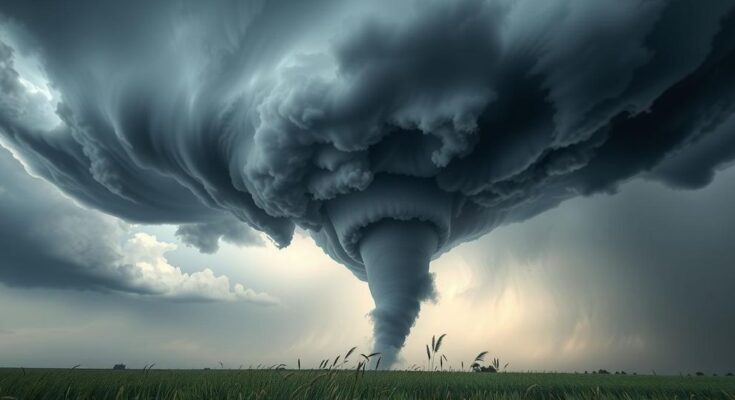Tornadoes are among the most destructive weather events, with wind speeds reaching 300 mph. Key facts include the deadliest tornado in history, the largest recorded tornado, and the most severe tornado outbreaks. Most tornadoes occur in the spring and can touch down across various regions of the United States, not just in the infamous Tornado Alley.
Tornadoes represent some of the most catastrophic natural phenomena, characterized by large swirling columns of air capable of achieving wind speeds up to 300 mph. The peak season for tornado occurrences usually commences in spring, making it vital for individuals to be well-informed about the realities and myths surrounding these destructive storms.
1. Deadliest Tornado: The Tri-State Tornado on March 18, 1925, is known as the deadliest tornado in U.S. history, traveling through Missouri, Illinois, and Indiana, claiming nearly 700 lives over a distance of 219 miles in just three hours.
2. Widest Recorded Tornado: The largest tornado on record struck El Reno, Oklahoma, on May 31, 2013, measuring 2.6 miles in width, with an astonishing wind speed of 302 mph, surpassing previous records held since 2004.
3. Worst Tornado Outbreak: On April 27, 2011, a brutal tornado outbreak in the Southern U.S. resulted in 207 tornadoes, with 319 fatalities and 2,839 injuries, marking it as one of the deadliest days in tornado history.
4. Duration of Tornadoes: Tornadoes can exist for varying durations, from mere moments to over an hour, although the average lifespan is approximately five minutes according to the National Oceanic and Atmospheric Administration (NOAA).
5. Global Occurrence: Tornadoes have been recorded on every continent except Antarctica, as the conditions necessary for their formation, such as warm, moist air, are typically absent in that region.
6. Tornadoes Beyond Tornado Alley: Although Tornado Alley is famous for its tornado activity, significant twisters can occur throughout the United States, including notable outbreaks in the northeastern states like Pennsylvania, Ohio, and New York in 1985.
7. Second Tornado Alley: A secondary tornado-prone area exists in the Southern U.S., encompassing states like Louisiana and Mississippi, where the moist air from the Gulf fuels severe storms and tornadoes, often making these events particularly deadly.
8. Tornado Peak Season: The prime months for tornado occurrences are March through May, with May 25 historically noted as the day with the highest number of tornado reports.
9. Daily Patterns: Tornadoes typically form most frequently in the afternoon and evening, especially from 4 to 9 p.m., making them dangerously unpredictable at night when visibility is limited.
10. U.S. Tornado Statistics: The United States experiences the highest number of tornadoes annually, averaging more than 1,200, largely attributed to its favorable geography combining cold and warm air masses.
In summary, tornadoes are extraordinarily destructive forces of nature, with specific historical events shaping their understanding and forecasting. Notable facts include the longest recorded duration, the deadliest and widest tornadoes, and the seasons and times when tornadoes most commonly occur. Awareness of these dynamics is crucial for preparedness, as these phenomena can strike unexpectedly across diverse geographical regions.
Original Source: www.accuweather.com




